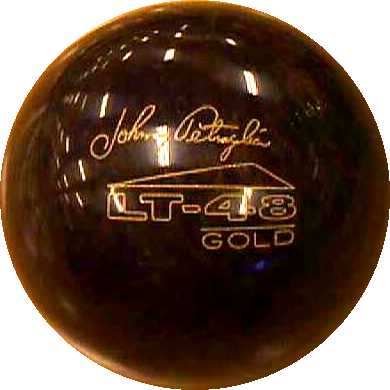Overview
Bowling balls are often made from plastic, urethane, reactive resin, and hard rubber. They are used in the game of bowling. A ball is rolled at a set of 10 wooden pins 60 feet away; the objective is to knock them all down. A ball has two or three holes, one for the middle finger, ring finger, and thumb. Most computer designed bowling balls have high density cores that are in the center of the ball. Most plastic balls do not have high density cores, they have a flat weight where the finger holes are. Some of these may be found in bowling allies. Bowling balls date back almost 4000 years, however bowling does not.
Bowling Ball Companies
Brunswick
Is the biggest company in the industry. It makes bowling lanes, pinsetting machines,
bowling balls, ball bags, bowling accessories like gloves and ball cleaner. They also own other companies, and no longer manufacture in the U.S.A. but now make everything in Mexico. They make the bowling balls for these companies:
Visionary
They aren't the most popular of the companies. They keep quiet for the most part. They are not part of the PBA (Professional Bowlers Association) name, so that their equipment is not allowed in the PBA.
Storm
In the last couple of years Storm has slowly become a top company. They make bowling balls and bowling ball bags. Along with shirts, hats and hoodies. They also make ball cleaners. They also own a few other companies:
Global 900/AMF
Global 900 is a relatively new company. They took over most of the AMF company but AMF is still part of it. The AMF part makes lane machines like Brunswick does and they also make bowling balls. Global 900 makes bowling shoes and balls, and even developed the first remote-control bowling ball. They own a few others also:
Lane Masters
Lane Masters is a lot like Visionary. They don't really advertise their products as much as the rest.
Types of bowling balls
The sport of bowling has changed over the years. Now balls hook lots; back 50 years ago they didn't. Here are several common types of bowling ball.
Wood

Wood bowling balls were made mostly of oak. They date back around 100 years ago. They are not used anymore. They are antiques.
Rubber
 A famous rubber bowling ball. Made by Brunswick.
A famous rubber bowling ball. Made by Brunswick.Rubber bowling balls took over wood in the early 1900s and lasted until the 1980's. Currently there are some bowlers who still use these, but they aren't recommend for oily, plastic lane surfaces, though they work well on a dry house-shot if they are rolled well enough. Pro bowler, Danny Wisemen, uses a rubber Black Diamond ball to shoot at spares.
Plastic
 A modern plastic ball by Brunswick.
A modern plastic ball by Brunswick.Plastic bowling balls took over in the 70s. They are still used today, but mostly for house balls, spare balls or beginning bowlers.
Urethane
 Storms new urethane bowling ball.
Storms new urethane bowling ball.In the 1980s Don McCune, the father of "The Soaker", created the first urethane bowling ball. Ebonite was the first to make them. They lasted about eleven years. They are still used today by those who want the high density core, but choose not to replace their ball every 600 games.
Reactive Resin
 A modern reactive resin bowling ball.
A modern reactive resin bowling ball.Reactive Resin is the standard today. A fellow in his garage was the first to make one, then he naively gave the formula to Columbia to mass-produce for him. Columbia did, but stole the formula without giving the inventor anything worthy of his invention. Today reactive resin balls have all different cover stocks (a chemical put on the outer level of the bowling ball). These make them stronger or weaker depending on the composition of the chemical used. They cost much more than others on the market. Urethane cost $80 when they first came out. A top of the line reactive resin ball will demand around $200 .
Grips
 Ball with fingertips. (Yellow circles are the grips)
Ball with fingertips. (Yellow circles are the grips) Conventional grip.
Conventional grip.A bowling ball has three holes. Two for fingers and one from the thumb. Most bowling ball finger holes have two different types. There is the conventional grip and fingertip. Conventional is just finger in the ball's hole. This is the natural feel of the sport. Almost all house balls have this kind of style. Fingertip is just grip put in the ball. This increases the lift that can be made with the ball.
Log in to comment